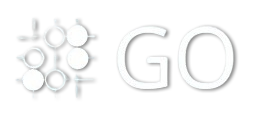
Docker Architecture in Docker
Docker's architecture is designed to make the process of creating, deploying, and running applications inside containers seamless and efficient. Here's an overview of the key components of Docker's architecture:
Key Components of Docker Architecture
Docker Client:
- The Docker Client is the interface through which users interact with Docker. It's typically a command-line interface (CLI) or a graphical user interface (GUI) that allows you to run Docker commands like
docker build,docker run,docker pull, anddocker push. - The Docker client communicates with the Docker daemon to perform tasks like creating and managing containers.
- The Docker Client is the interface through which users interact with Docker. It's typically a command-line interface (CLI) or a graphical user interface (GUI) that allows you to run Docker commands like
Docker Daemon (dockerd):
- The Docker Daemon is a background service (or process) that handles the heavy lifting of building, running, and managing Docker containers. It's responsible for:
- Managing containers, images, networks, and volumes.
- Responding to Docker client requests (via the Docker API).
- Running containers and orchestrating their lifecycle.
- The Docker daemon can run on a local machine or be part of a larger Docker infrastructure (like Docker Swarm or Kubernetes).
- The Docker Daemon is a background service (or process) that handles the heavy lifting of building, running, and managing Docker containers. It's responsible for:
Docker Images:
- Docker Images are the blueprints for containers. They contain everything needed to run an application: code, libraries, environment variables, and configuration files.
- Images are read-only and can be stacked or layered to reduce redundancy. For example, a base image like
ubuntucan be used to build custom images by adding application code on top of it. - You can pull images from public registries like Docker Hub or create custom images using a
Dockerfile.
Docker Containers:
- Containers are running instances of Docker images. They are lightweight and isolated environments where your application runs.
- A container shares the host operating system's kernel but runs in its own user space, making it fast to start and stop.
- Containers are ephemeral, meaning they can be started, stopped, and deleted with minimal overhead. However, you can persist data using volumes or bind mounts.
Docker Registry:
- A Docker Registry is a repository for storing Docker images. It can be either public (like Docker Hub) or private.
- When you use
docker pull, you're pulling an image from a registry. When you usedocker push, you're pushing your custom-built images to a registry for sharing or storage.
Docker Networks:
- Networks in Docker allow containers to communicate with each other. By default, containers on the same host can communicate via a bridge network, but Docker allows you to configure different network types (e.g., bridge, host, overlay, etc.).
- Docker's network management makes it easy to set up complex multi-container applications.
Docker Volumes:
- Volumes are used to persist data outside of containers, ensuring that data isn't lost when a container is stopped or removed.
- Volumes are typically used for things like databases or application data that need to persist independently of the container lifecycle.
Docker Compose (Optional in Architecture):
- Docker Compose is a tool that allows you to define and run multi-container Docker applications using a simple YAML file (
docker-compose.yml). It abstracts away the complexity of managing multiple containers and their dependencies. - It’s particularly useful for development, testing, and staging environments where multiple services (e.g., database, web server) are needed.
- Docker Compose is a tool that allows you to define and run multi-container Docker applications using a simple YAML file (
Summary of Communication Flow:
- Docker Client sends commands to the Docker Daemon, which manages the containers.
- The Docker Daemon communicates with the Docker Registry to pull images or push images.
- Docker Containers run based on the images, and their interactions can be managed through Docker Networks and Docker Volumes for data persistence.
Docker in the Cloud (Optional):
- When Docker is used in cloud environments (AWS, Azure, GCP), it typically interacts with orchestration platforms like Kubernetes or Docker Swarm for managing multi-container applications at scale.
This architecture enables Docker to be a powerful tool for packaging, deploying, and running applications in a consistent manner across different environments.
